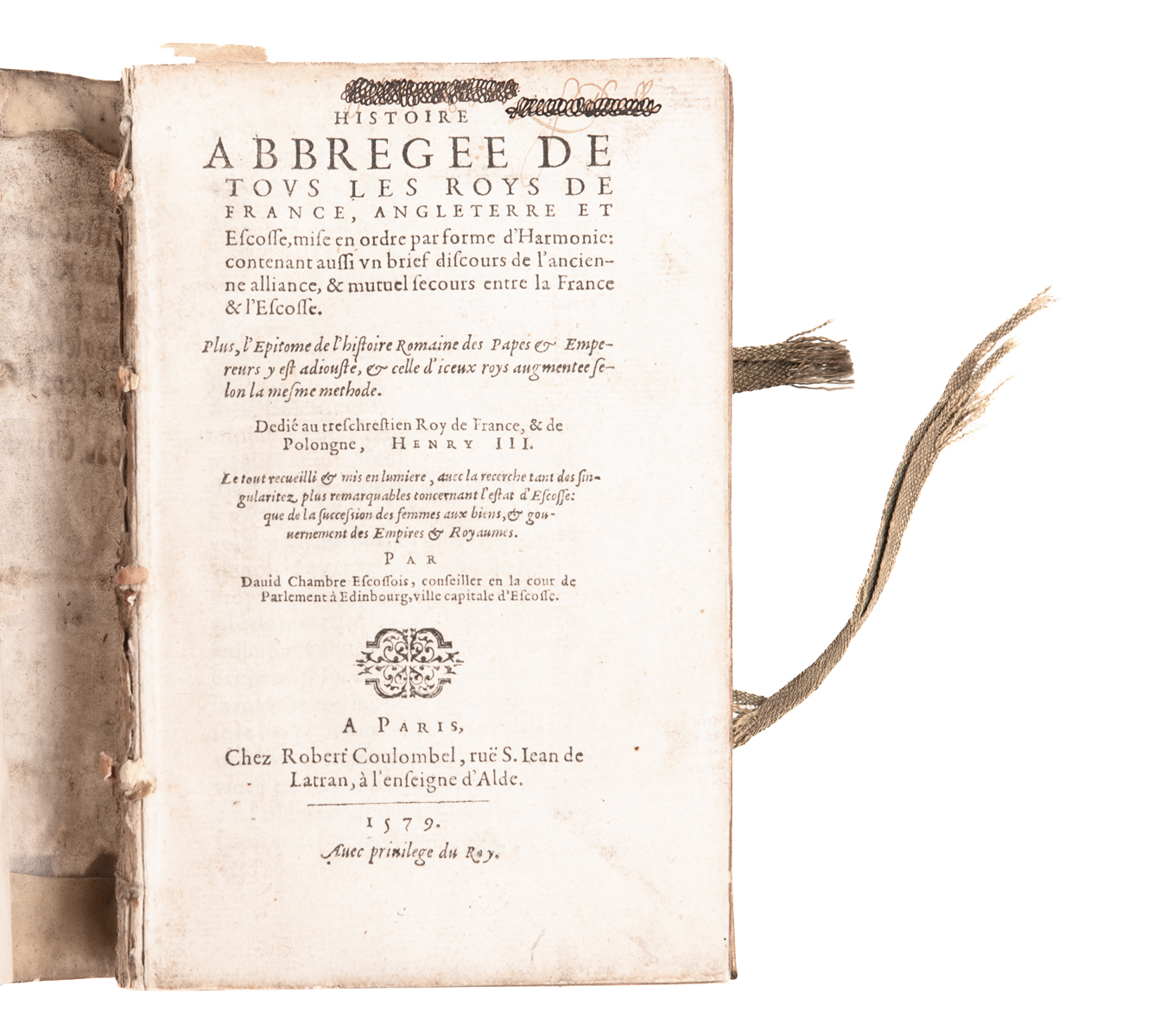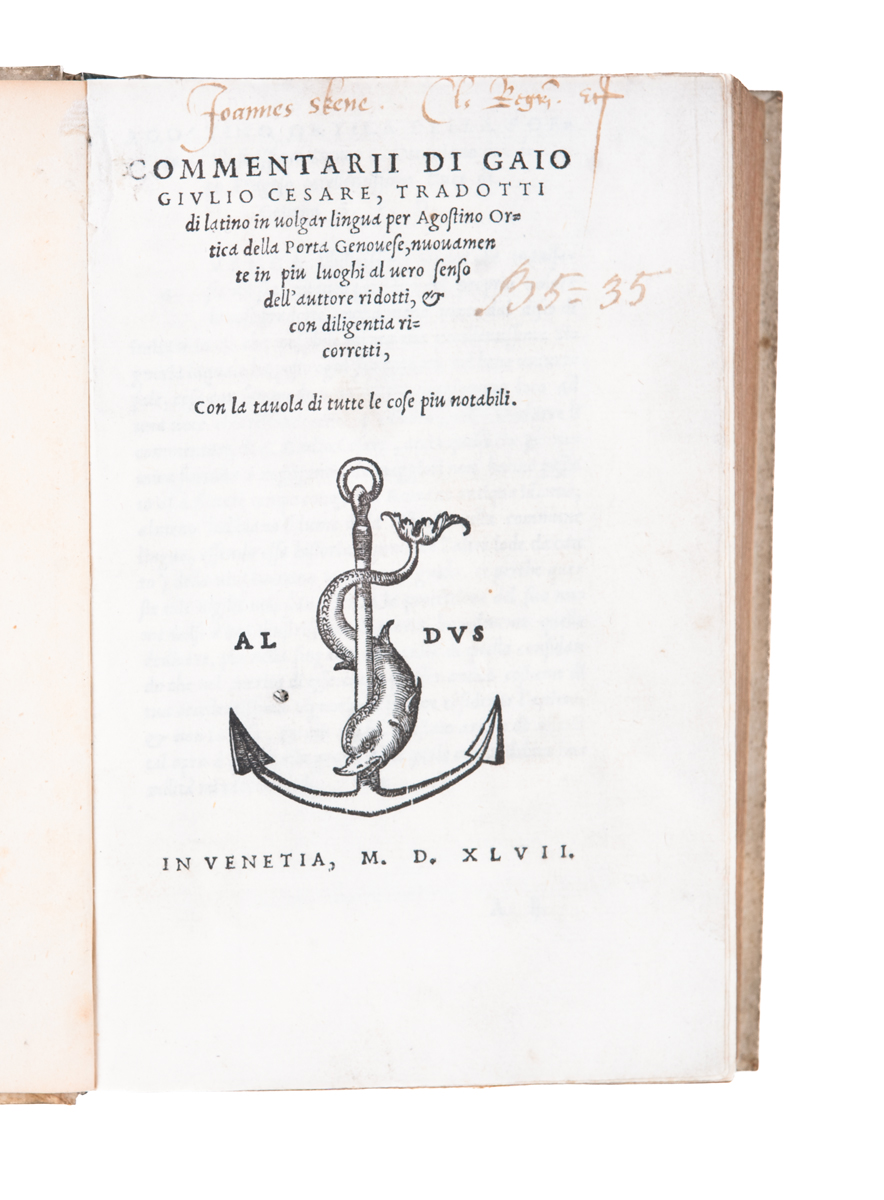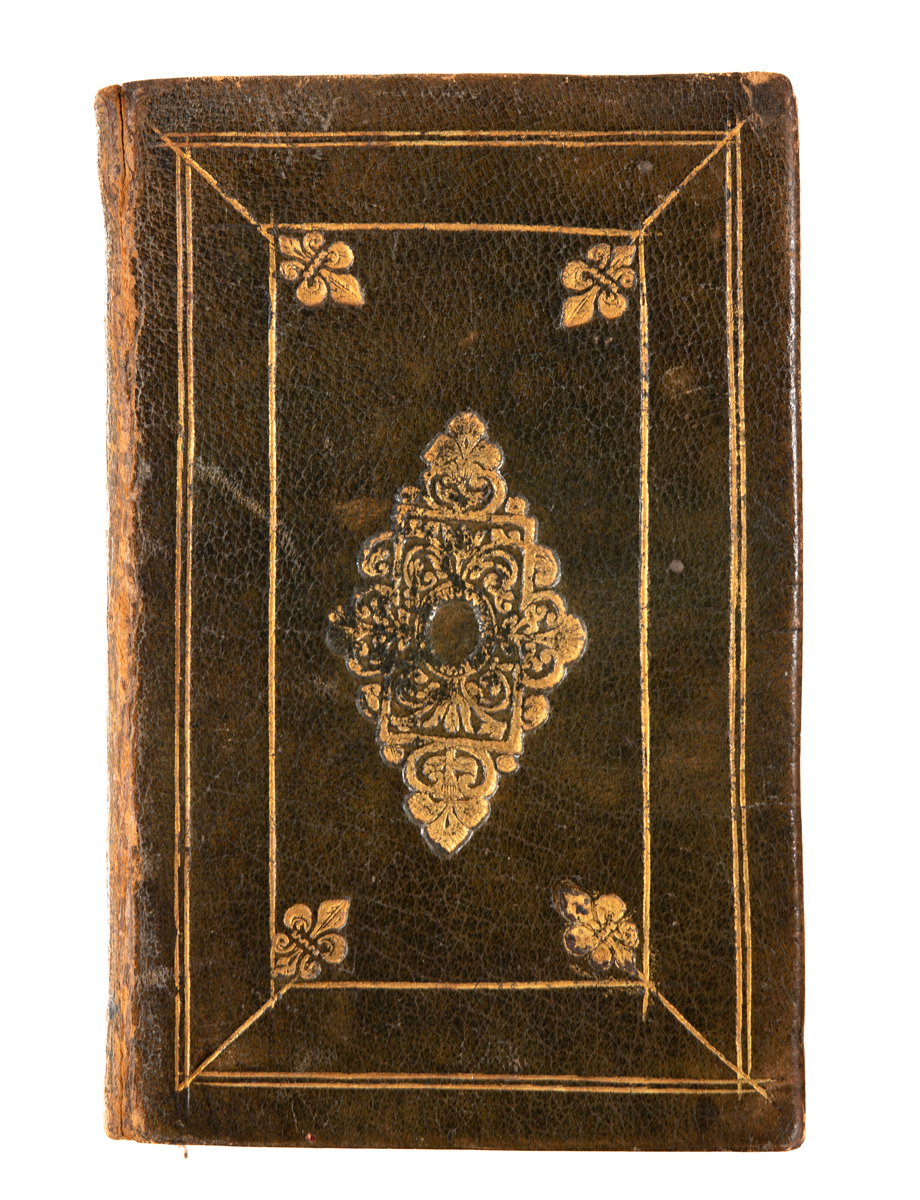
CHALMERS [CHAMBERS], David, Lord Ormond.
Histoire abbregée de toutes les Roys de France, Angletaire, et Escosse … [with:] La Recherche des singularitez plus remarquables, concernant l’estat d’Escosse … [and:] Discours de la legitime succession des femmes aux possessions de leurs parents: & du gouvernement des princesses aux Empires & Royaumes …
Paris, Robert Coulombel ‘at the sign of Aldus’, 1579.
Three works issued together, 8vo, pp. 16, ff. 17–24, 235, [5]; ff. [iv] 32, [1]; [vi], 34, [2]; Aldine device to title-pages of second and third works; very good copies, bound in early stiff vellum, yapp edges, green ties (frayed), front hinge cracked; ownership inscriptions to head of title-page scored though, early eighteenth-century armorial bookplate of John Hay, second Marquess of Tweeddale (1645–1713) (Franks 14192/*566).

Added to your basket:
Histoire abbregée de toutes les Roys de France, Angletaire, et Escosse … [with:] La Recherche des singularitez plus remarquables, concernant l’estat d’Escosse … [and:] Discours de la legitime succession des femmes aux possessions de leurs parents: & du gouvernement des princesses aux Empires & Royaumes …
First edition of the three principal works of David Chalmers (c. 1530–1592), a faithful follower of Mary, Queen of Scots, who appointed him Lord of Session and Privy Counsellor.
He was sent into exile after being implicated in the murder of Darnley and assisting in the escape of Mary from Loch Leven, settling in France, where the manuscripts of these works were presented to Charles IX in 1572. He was allowed to return to Scotland in 1584 and resumed his career as a judge.
The first work, which drew heavily on Boethius ‘was a small triumph of compilation, exposition, and typography. It placed Scotland in the mainstream of European history as seen by French readers, and emphasized the continuity of the Franco-Scottish alliance against England (dated by Chalmers to AD 792). Just to make sure, he included a description of that alliance as an appendix’ (Oxford DNB). It also includes accounts of Popes and Emperors. The second work is an account of the three estates of Scotland dedicated to Mary Queen of Scots; it ‘stressed the civilized nature of the Scots, even the highlanders’. The third work (written 1573), dedicated to Catherine de’ Medici, is a defence of the right of women to inherit the property of their parents and of princesses to succeed to their parents’ thrones.
Provenance: John Hay, second Marquess of Tweeddale, MP, and Lord Chancellor of Scotland in 1704–5, was a firm supporter of Union.
Brunet I, col. 1763; Renouard 299:3; STC French, p. 98.

